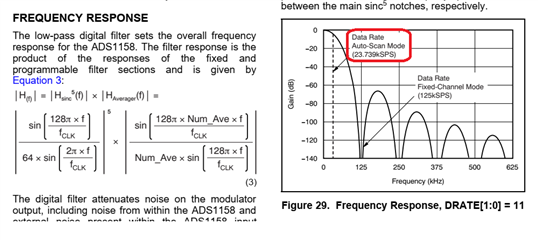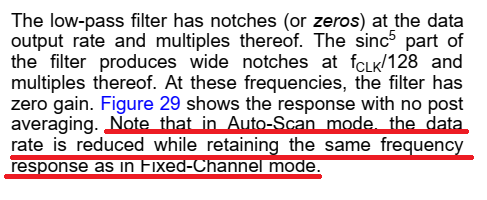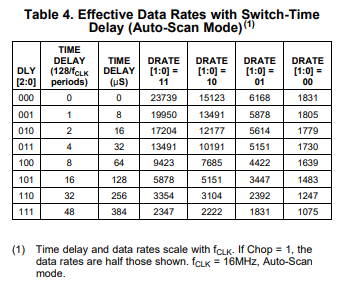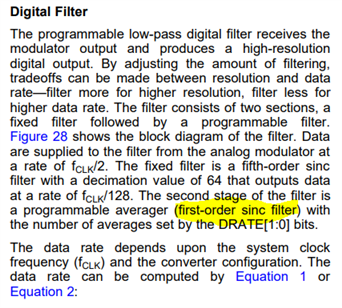The datasheet says that the fixed-channel data rate is 125 kSPS, and the auto-scan data rate for 16 channels is 23.7 kSPS/Channel. This doesn’t seem possible to me, because 125ksps/16 = 7.8ksps. How can this part sample each channel at 23.7kSPS, yet only be capable of 125ksps on a single channel?
Since this is a delta-sigma converter, I believe there is latency between when a sample is captured, and when it appears at the digital interface. How do I figure out what this latency is?
When switching between ADC channels (or auto-scanning), is there extra delay required to “flush” the digital filter data from the previous ADC channel?






